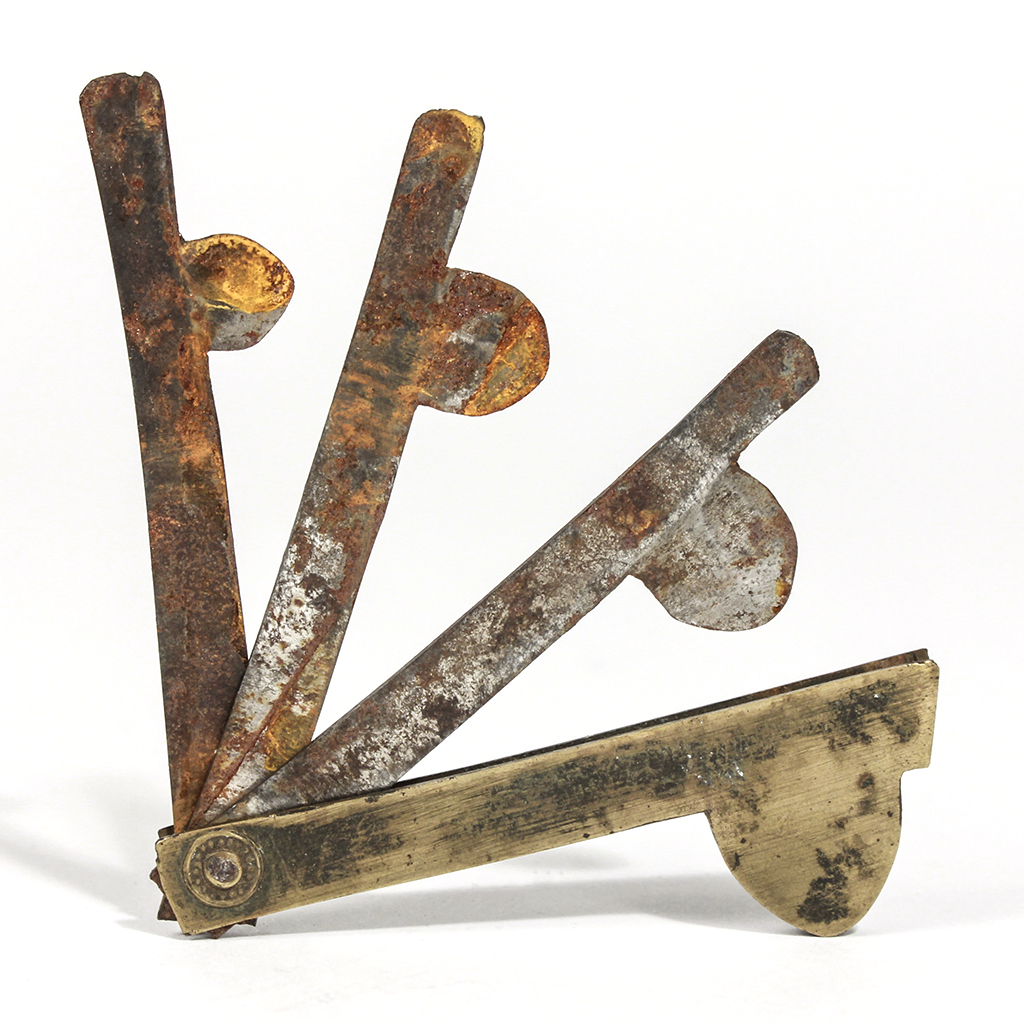Rusty Bleeder
Antique bloodletting tool known as a fleam, c. 1820s. The fleam has a brass body with three folding iron blades (and is painted with a museum number from a deaccession). It was once a common medical tool found in the possession of every doctor.
Despite weakening the patient and increasing the chance of infections, bloodletting is said to have been the most common medical practice for two thousand years, from classical antiquity up until the late 19th century. It was deemed standard treatment for almost every disease. Although physicians would recommend bloodletting to treat a given ailment, it was often the barber who would execute the procedure (hence the red and white barber poles which persist today, symbolizing the blood and bandages). This tool would have been used in the common treatment of “phelbotomy” which typically involved opening a large vein in the forearm or the neck and withdrawing as many as several liters of blood. One 19th century medical text recommended bloodletting for acne, asthma, cancer, cholera, coma, convulsions, diabetes, epilepsy, gangrene, gout, herpes, indigestion, insanity, jaundice, leprosy, ophthalmia, plague, pneumonia, scurvy, smallpox, stroke, tetanus, tuberculosis, and still one hundred other diseases. As late as 1923, Sir William Osler, one of the founders of Johns Hopkins hospital, recommended bloodletting in a textbook he authored.
Today, the rusty fleam is a sobering reminder of the blindspots inherent in science and medicine, but also the need to maintain a healthy skepticism of practices unquestioned and routine.
Condition
Well aged, with rusty iron blades, patina on the brass casing.
Measurements
3 inches long
1 inch deep
Shipping
Free in the continental United States. If an international buyer, please contact me for a shipping estimate by clicking here.
$165
In stock















